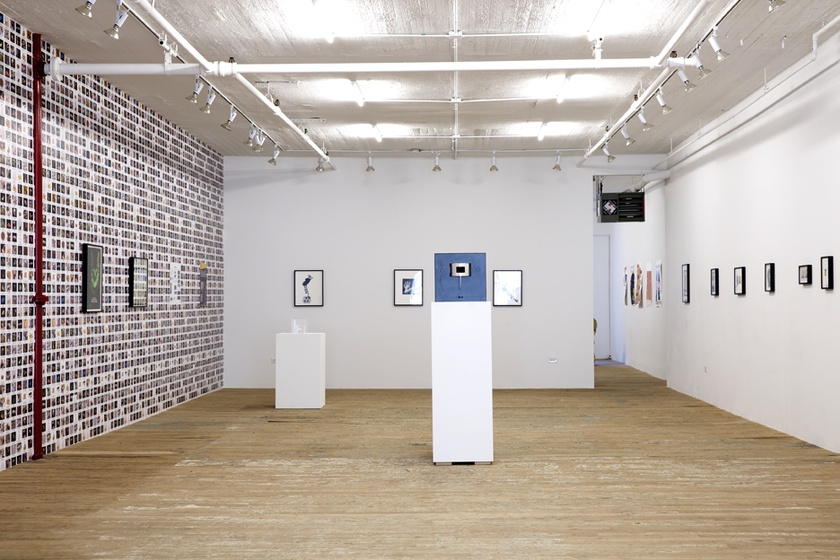
"Lynn Hershman Leeson: Origins of the Species," installation view, Bridget Donahue. Copyright Lynn Hershman Leeson. Photos by Marc Brems Tatti. Courtesy Bridget Donahue, New York.
Lynn Hershman Leeson has been probing the idea of what it means to be a cybernetic organism since the 1960s. This line of inquiry is laid bare in "Origins of the Species," a solo exhibition of Hershman Leeson's work that inaugurates Bridget Donahue's new gallery space in New York. Running concurrently with the artist's first museum retrospective, "Civic Radar," at ZKM in Karlsruhe, Germany, the exhibition nevertheless assembles an impressive cross-section of Hershman Leeson's work, including multimedia works on paper, sculpture, photographs, collages, videos, and interactive installations, spanning her five-decade career.
We find the hybrid of organism and machine, very conspicuously, in the sculpture Breathing Machine II (1968/2011), a woman's face cast in wax with a tangle of feathers, butterflies, and other fauna dispersed throughout her hair, actuated to "breathe" when the viewer draws close enough to peer down onto her. Or in Hershman Leeson's Phantom Limb series (1985-1987), in which the female body melds with sockets and wires, so that technology is as much a part of one's appearance as one's skin or physique.
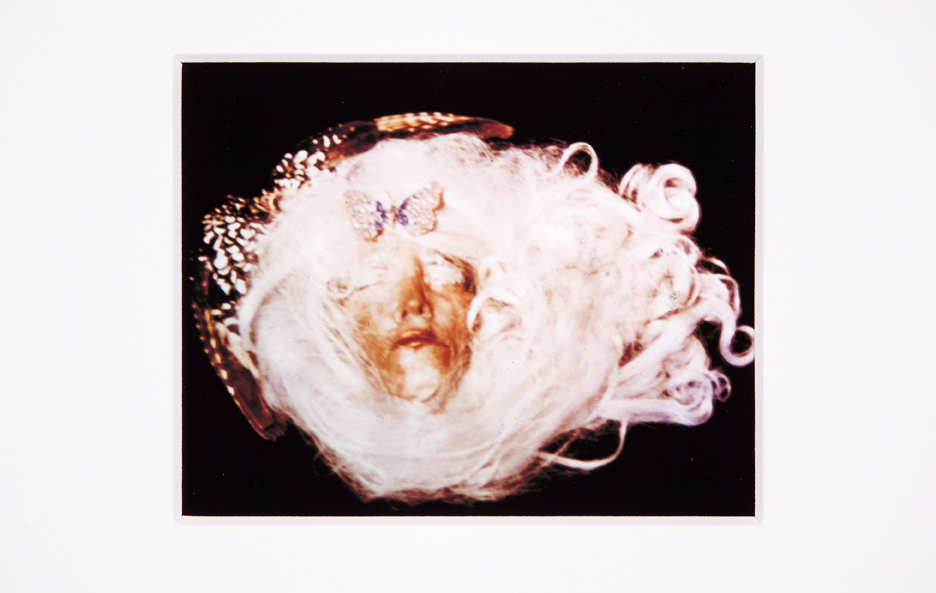
Lynn Hershman Leeson, Breathing Machine II (detail), (Early Work "Suicide Pieces" wax sculpture burned, photos are documents of these works, 1965). Copyright Lynn Hershman Leeson. Photos by Marc Brems Tatti. Courtesy Bridget Donahue, New York.
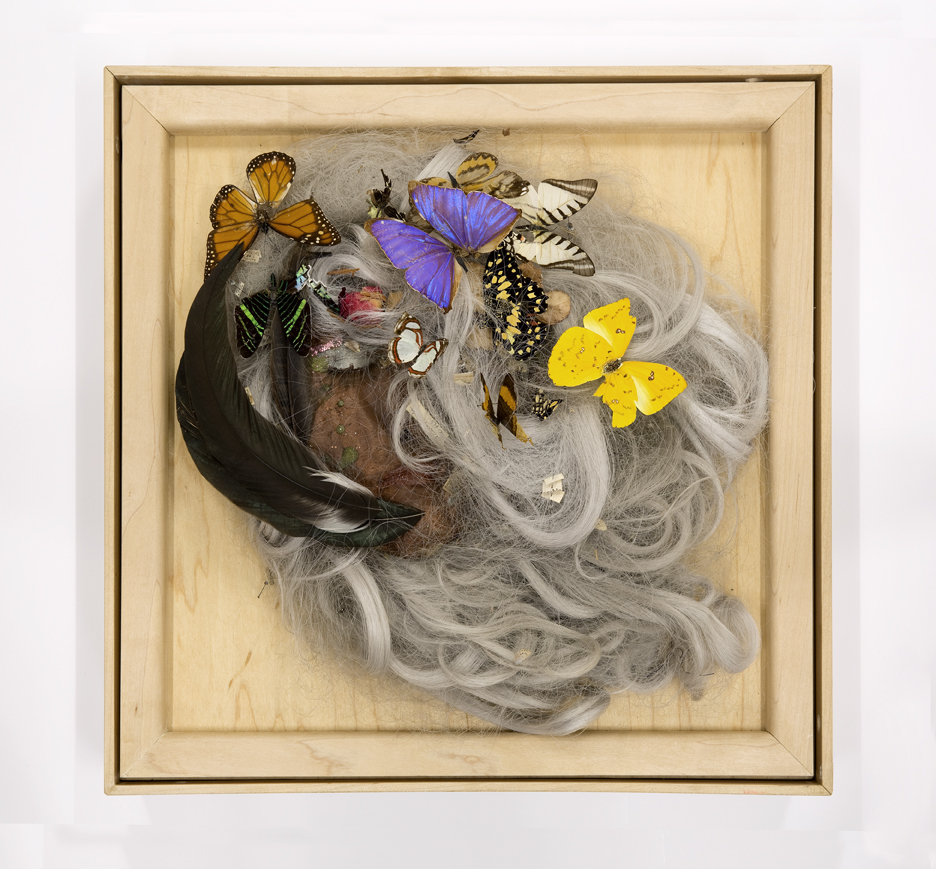
Lynn Hershman Leeson, Breathing Machine II (1968). Copyright Lynn Hershman Leeson. Photos by Marc Brems Tatti. Courtesy Bridget Donahue, New York.
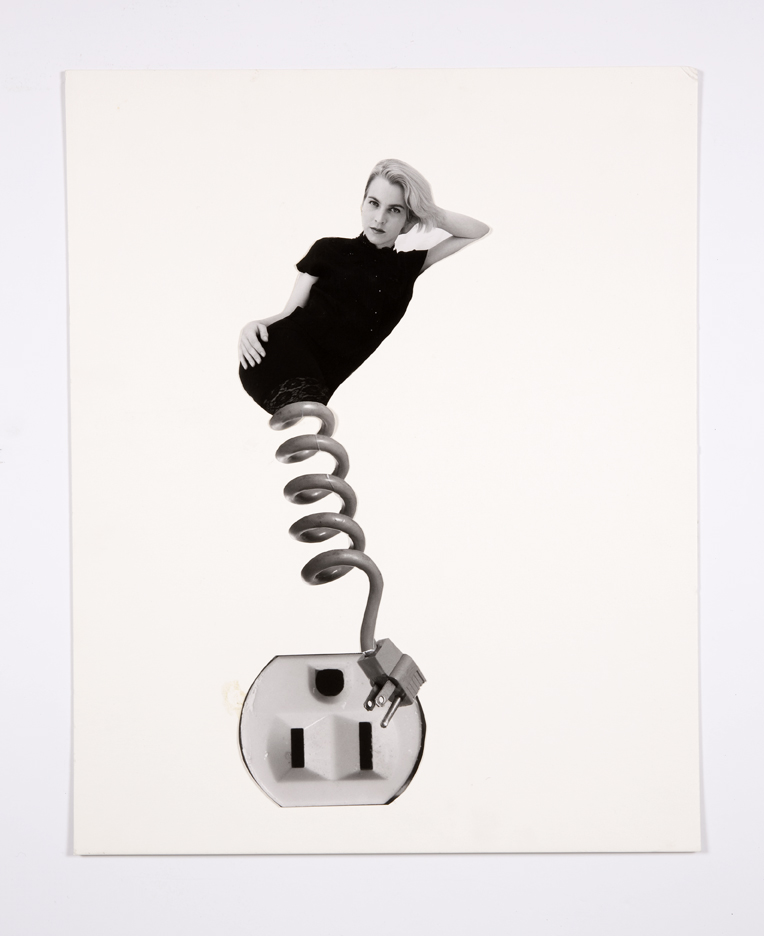
Lynn Hershman Leeson, Plugged (1987). Copyright Lynn Hershman Leeson. Photos by Marc Brems Tatti. Courtesy Bridget Donahue, New York.
Other instances are more subdued: Dress Me 1, 2, 3 (1965) and photographic documentation of her Roberta Breitmore performance (1974-1978) are suggestive of avatars, multiple identities, and multiple personas, in distant anticipation of MUDs, chat rooms, and social networks. The former depicts a woman with three options of clothes to wear, her body a mere outline devoid of sexual organs, the words "DRESS ME" emblazoned across her breastless chest. She longingly looks toward her two garment options: an average looking coral frock or a diagram of parts, words, and pieces, appearing simultaneously deconstructed and reassembled, as though taking in the outside forces that seek to define a woman wearing a dress in the world: "shadow," "reflection," "body," "&,"… "!!" What will I wear today? How will I be perceived, measured, valued, judged? Who am I: right now, today, or tomorrow?

Lynn Hershman Leeson, Dress Me 1, 2, 3 (3 plates), (1965). Copyright Lynn Hershman Leeson. Photos by Marc Brems Tatti. Courtesy Bridget Donahue, New York.
As if to bring this dilemma to life, Hershman Leeson conceptualized Roberta Breitmore, a persona that she performed from 1974 to 1978. During this time, Breitmore came to be recognized as a person in her own right, interacting with people and systems, obtaining a driver’s license, opening a bank account, and applying for credit cards. Included in "Origins", we find two photographs documenting some of Breitmore's real encounters with people, traces that of exchanges that actually took place. Yet these people will most likely never think of this woman as anything other than a woman, if they remember her at all. Thus, there was no "performance" for the people who experienced Breitmore’s presence in the world: only those who are looking back on this as a performance can distinguish it from everyday reality. This differentiates her work from that of Cindy Sherman, Laurie Simmons, Eleanor Antin, and Suzanne Lacy; each of those artists embodied an identity and life other than their own, but Hershman Leeson's performance is a fugitive one, barely discernible as such apart from its tangible affect. Anticipatory of filling in the negative space of platforms like Facebook, Instagram, and Tumblr, Hershman Leeson's Breitmore inhabits the negative spaces of the physical world and its systems, her identity constructed through encounters and paper trails, or what could now be equated to digital footprints.
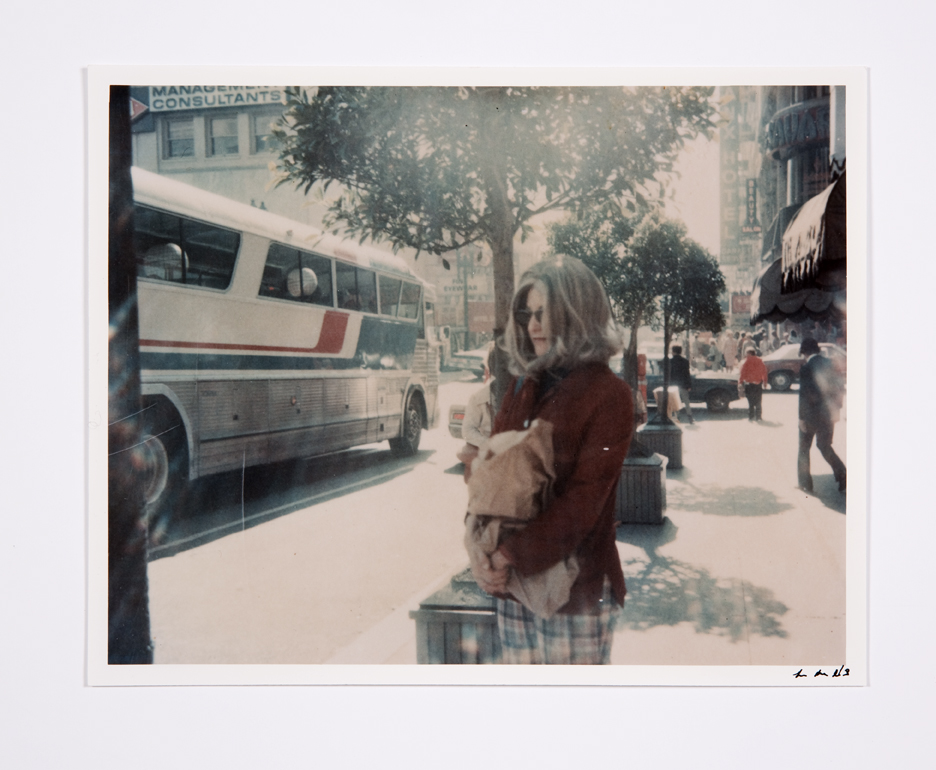
Lynn Hershman Leeson, Roberta at Bus Stop (Roberta Breitmore - Anonymous Social Constructions, 1978). Copyright Lynn Hershman Leeson. Photos by Marc Brems Tatti. Courtesy Bridget Donahue, New York.
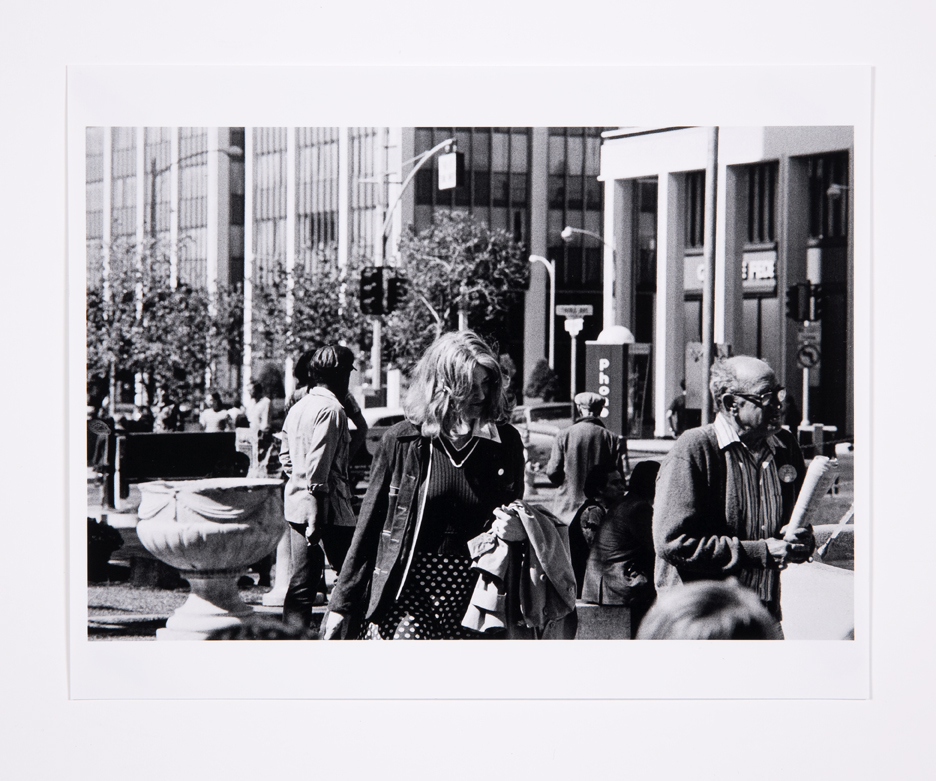
Lynn Hershman Leeson, Roberta Walking with Preacher (San Diego), Front View (1975). Copyright Lynn Hershman Leeson. Photos by Marc Brems Tatti. Courtesy Bridget Donahue, New York.
During "Do you Follow?: Art in Circulation 3" at the ICA London in October 2014, Hannah Black posited that the issues Amalia Ulman addresses in her Instagram performance Excellences and Perfections (2014) were not specific to internet culture: "you could have probably talked about [this] in the seventies or whatever, it's just the methods of distribution have changed." In Hershman Leeson there is proof. Ulman's statement, "Being watched means coming to life and being someone," is just as much true for the character of Roberta Breitmore as her performance on social media. This comes full circle in Hershman Leeson's Room of One's Own (1990-1993), an interactive sculpture with a surveillance camera and motion detector that is activated as the viewer peers into the opening of a pedestal-mounted box. One eye stares back, and a small projection of a woman sitting in a room incisively asks, "Excuse me, what are you doing here?…Would you please look away?…How did you get here?…Who are you?" The sculpture comes to life through the viewer's gaze, by being gazed upon.
The arc of the cybernetic organism in "Origins of the Species" reaches its climax with The Infinity Engine, an ongoing research undertaking including a series of works that replicate some of the paraphernalia found in genetics labs. Wallpaper with a visual index of GMO animals, crops, and labs decorates the wall (Eduardo Kac's Alba makes an appearance), overlaid with propaganda-like posters advocating for bioengineering. Here, the cyborg manifests itself at a cellular level: the very makeup of our cells is entwined with technology. By focusing on the smallest level of human life, this inward-looking approach reaches far beyond our bodies, suggesting that the "origins" of the exhibition's title may not lie in the past, and that the "species" it refers to may not be recognizable life forms as we now know them.
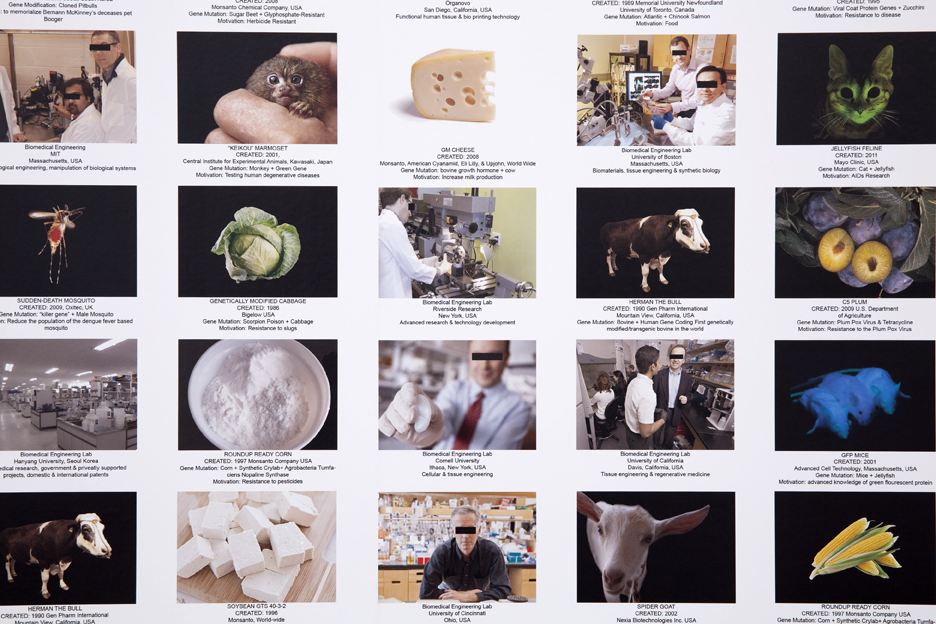
Lynn Hershman Leeson, GMO Animals, Crops, Labs (The Infinity Engine), (wallpaper, 2014). Copyright Lynn Hershman Leeson. Photos by Marc Brems Tatti. Courtesy Bridget Donahue, New York.
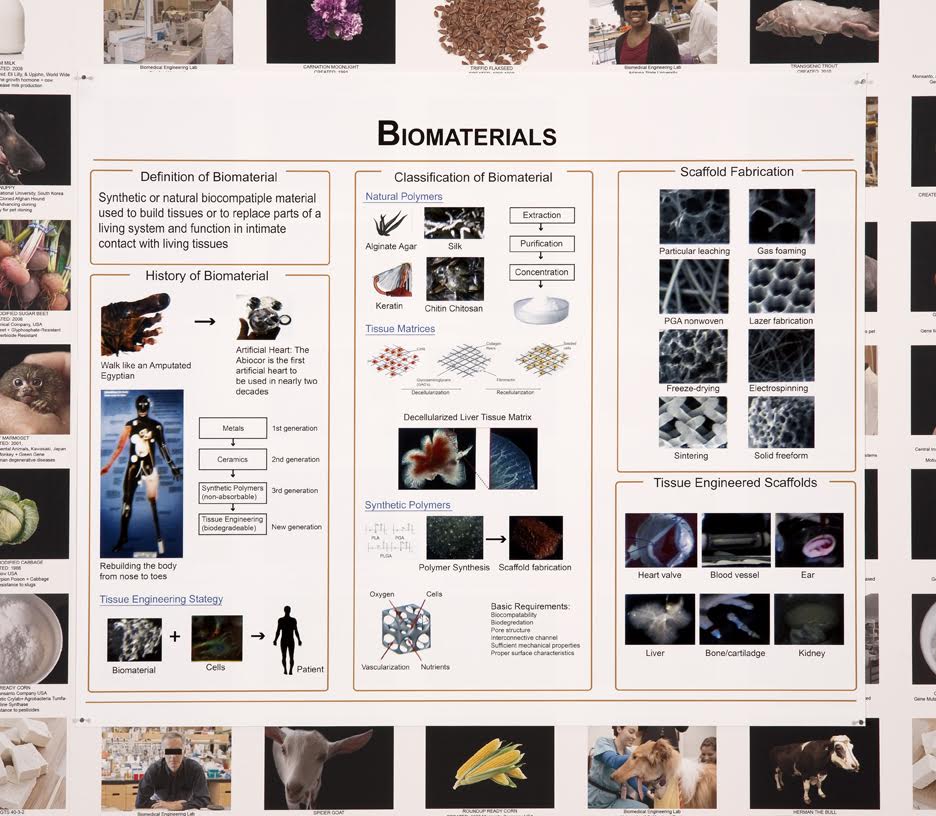
Hershman Leeson, Biomaterials (digital print, 2013). Copyright Lynn Hershman Leeson. Photos by Marc Brems Tatti. Courtesy Bridget Donahue, New York.
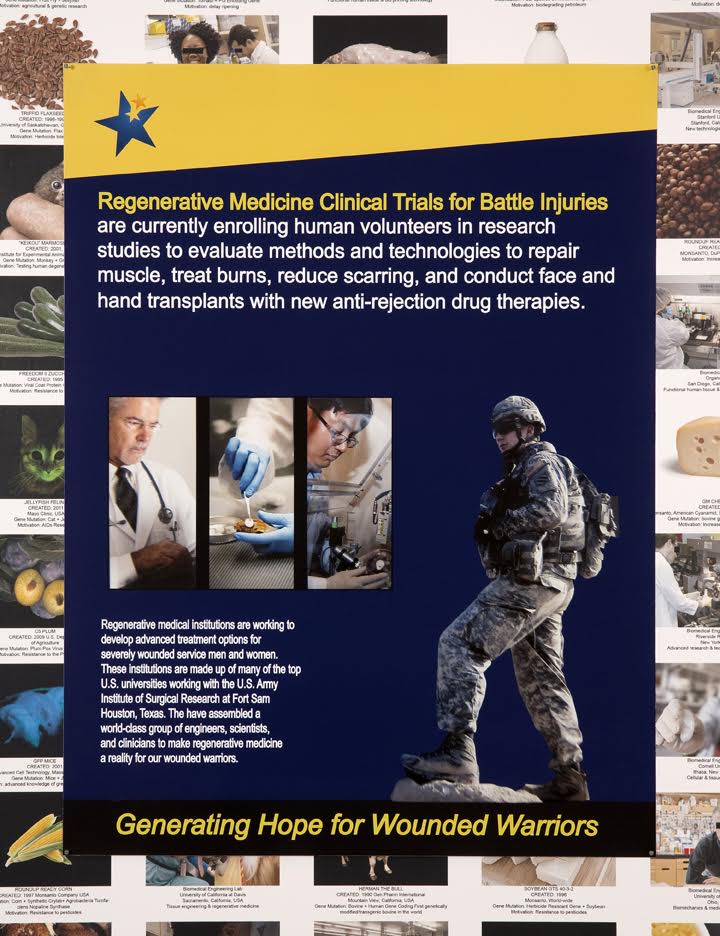
Lynn Hershman Leeson, Soldier Poster (2013), Copyright Lynn Hershman Leeson. Photos by Marc Brems Tatti. Courtesy Bridget Donahue, New York.
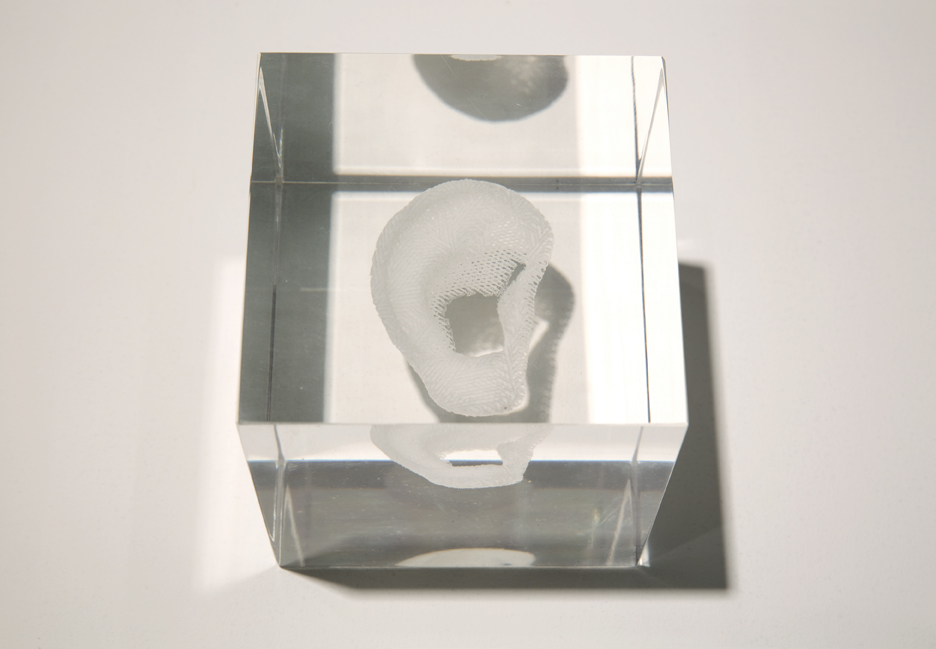
Lynn Hershman Leeson, Cube with Bio Printed Ear Scaffold (2013). Copyright Lynn Hershman Leeson. Photos by Marc Brems Tatti. Courtesy Bridget Donahue, New York.
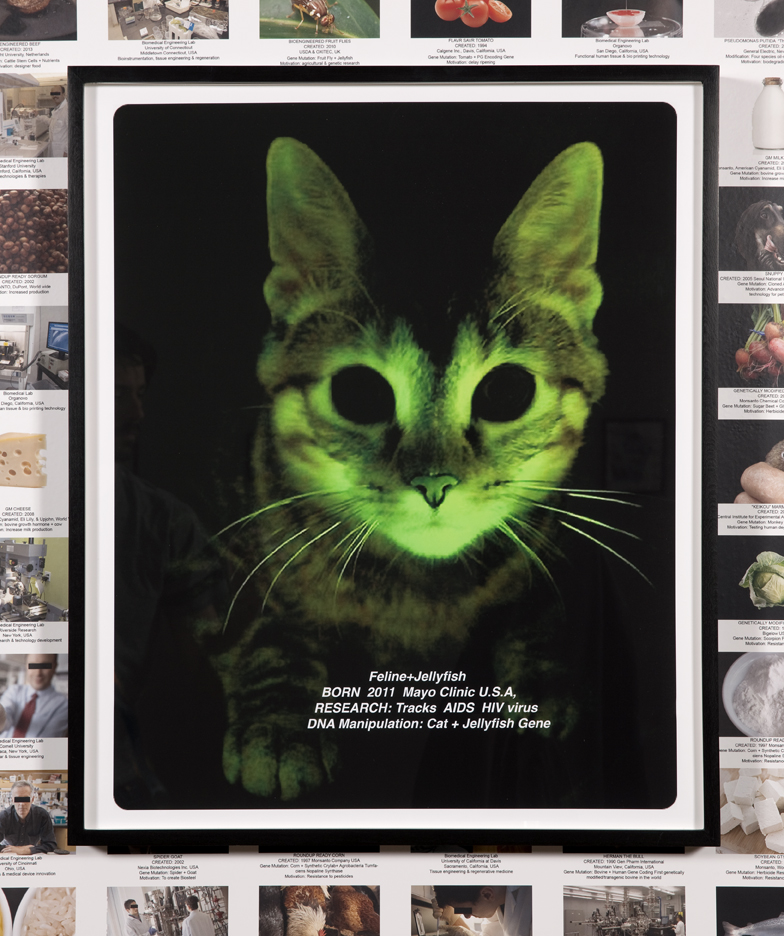
Lynn Hershman Leeson, Glo Cat (2013). Copyright Lynn Hershman Leeson. Photos by Marc Brems Tatti. Courtesy Bridget Donahue, New York.
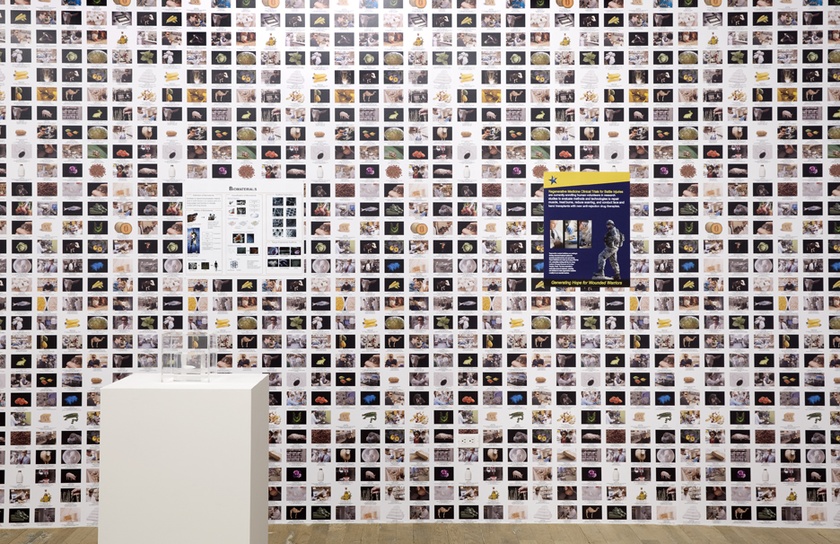
"Lynn Hershman Leeson: Origins of the Species," installation view, Bridget Donahue. Copyright Lynn Hershman Leeson. Photos by Marc Brems Tatti. Courtesy Bridget Donahue, New York.
Further early works in the exhibition include:
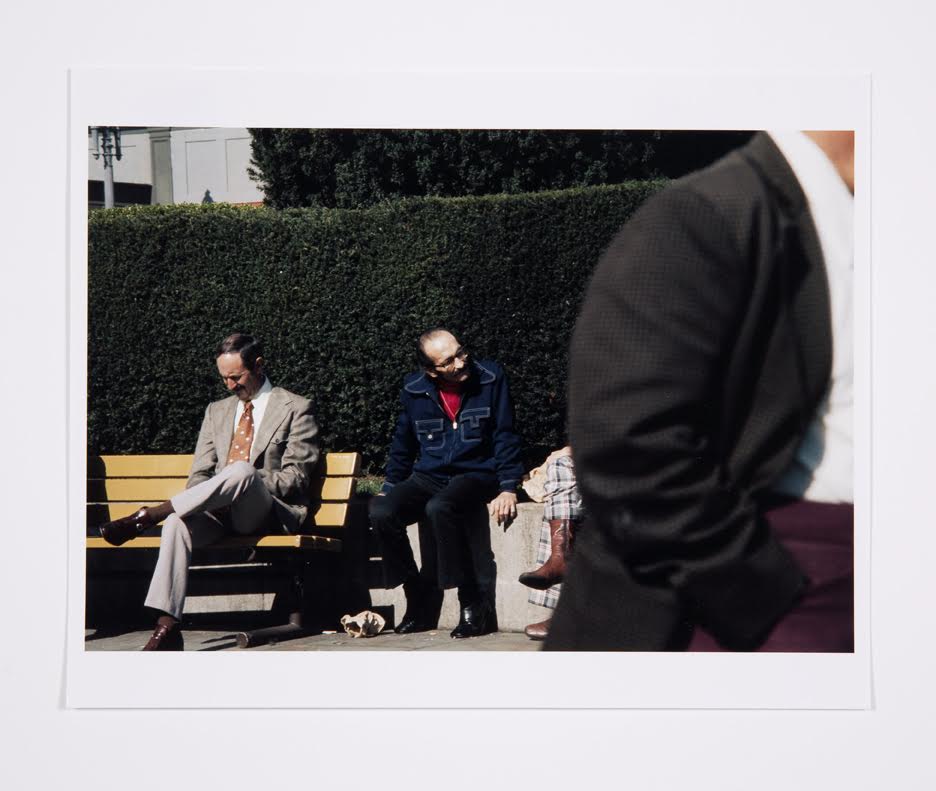
Lynn Hershman Leeson, Roberta and Blaine in Union Square, Untitled, Roberta Missing (1975). Copyright Lynn Hershman Leeson. Photos by Marc Brems Tatti. Courtesy Bridget Donahue, New York.
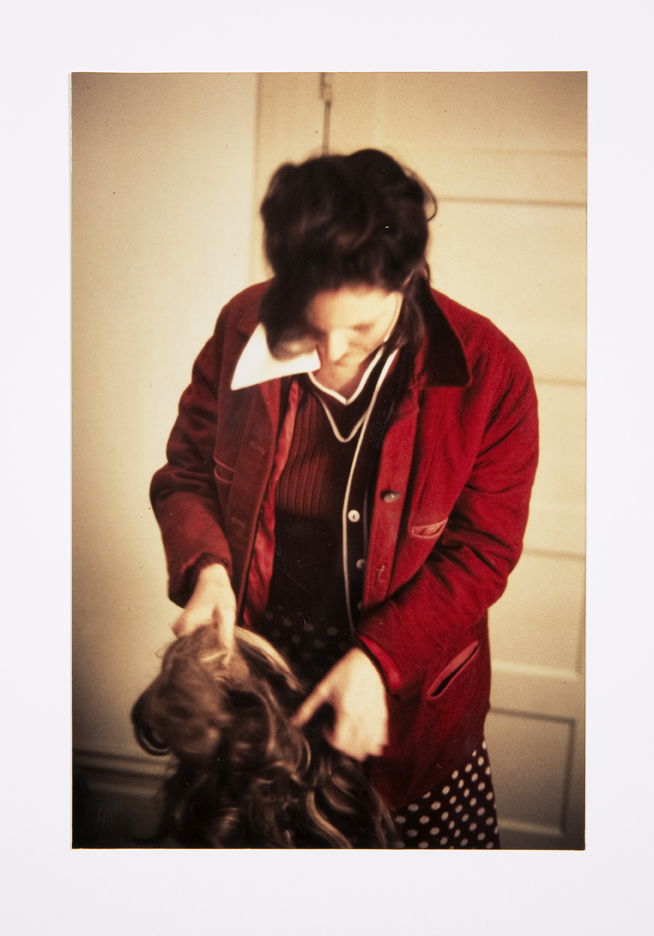
Lynn Hershman Leeson, Multiple Becoming Multiple, No. 3: a (Roberta Breitmore - Anonymous Social Constructions, 1977). Copyright Lynn Hershman Leeson. Photos by Marc Brems Tatti. Courtesy Bridget Donahue, New York.
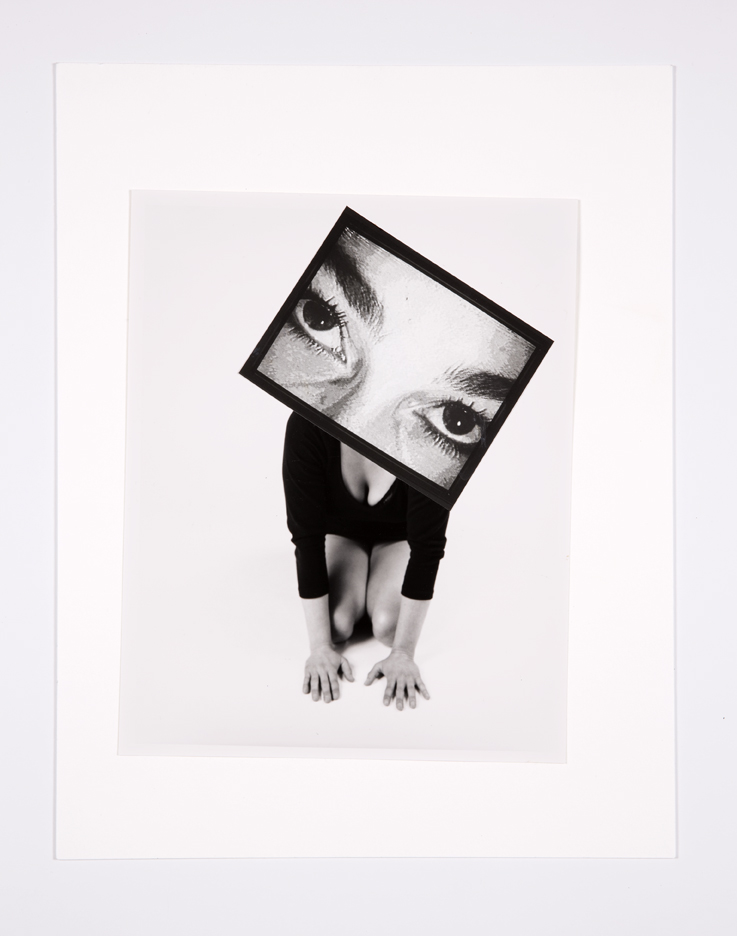
Lynn Hershman Leeson, Phantom Limb, test 2 (1986). Copyright Lynn Hershman Leeson. Photos by Marc Brems Tatti. Courtesy Bridget Donahue, New York.
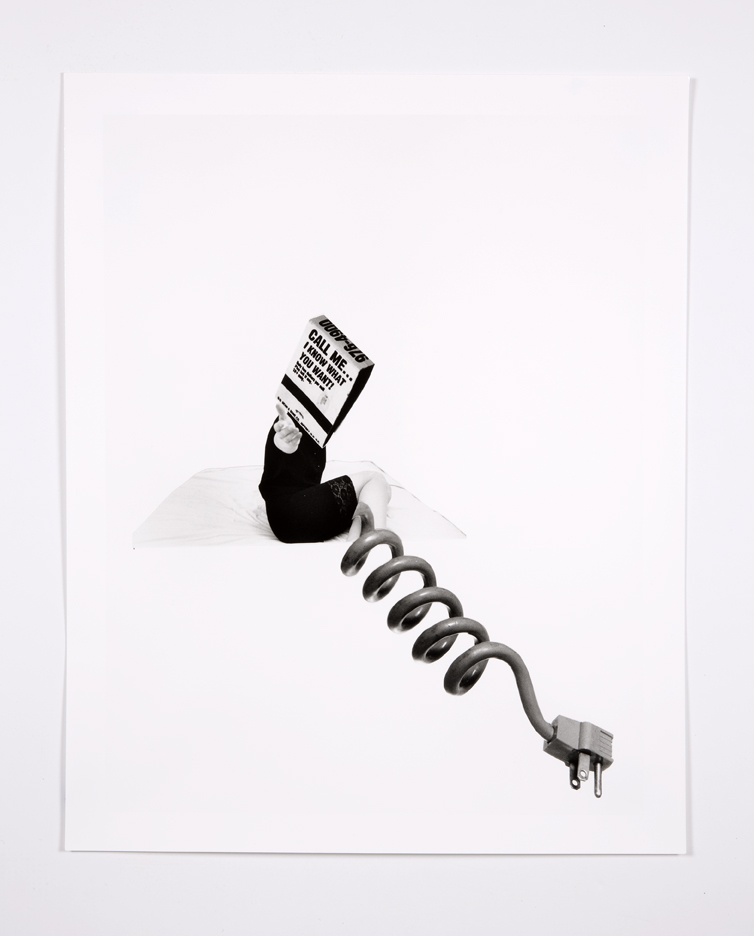
Lynn Hershman Leeson, Call Me (1987). Copyright Lynn Hershman Leeson. Photos by Marc Brems Tatti. Courtesy Bridget Donahue, New York.
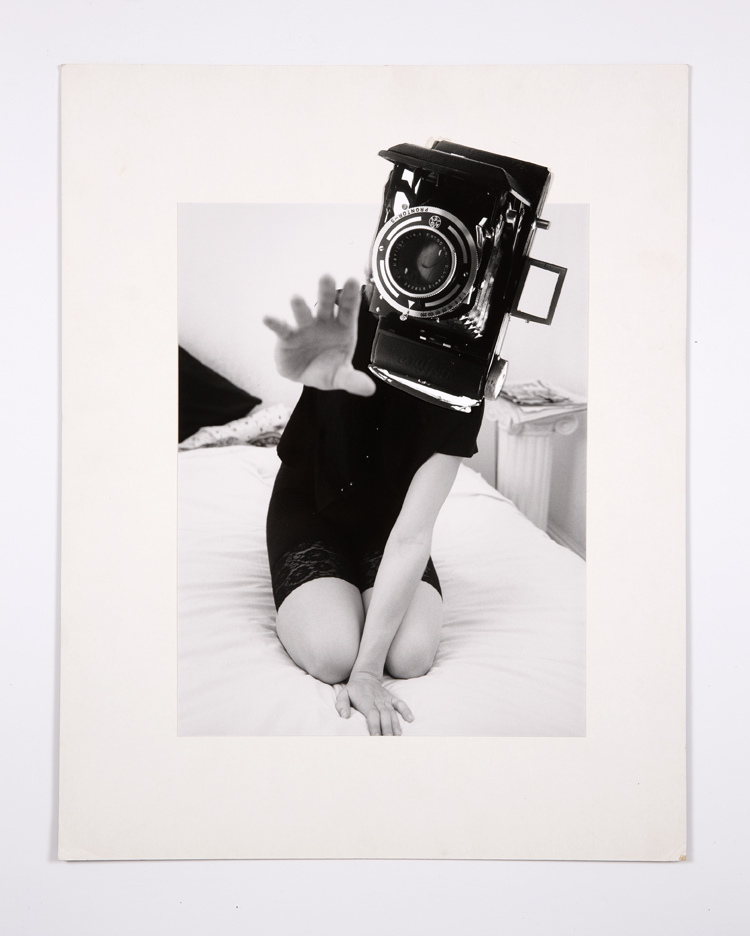
Lynn Hershman Leeson, Reach - Original Collage (1987). Copyright Lynn Hershman Leeson. Photos by Marc Brems Tatti. Courtesy Bridget Donahue, New York.
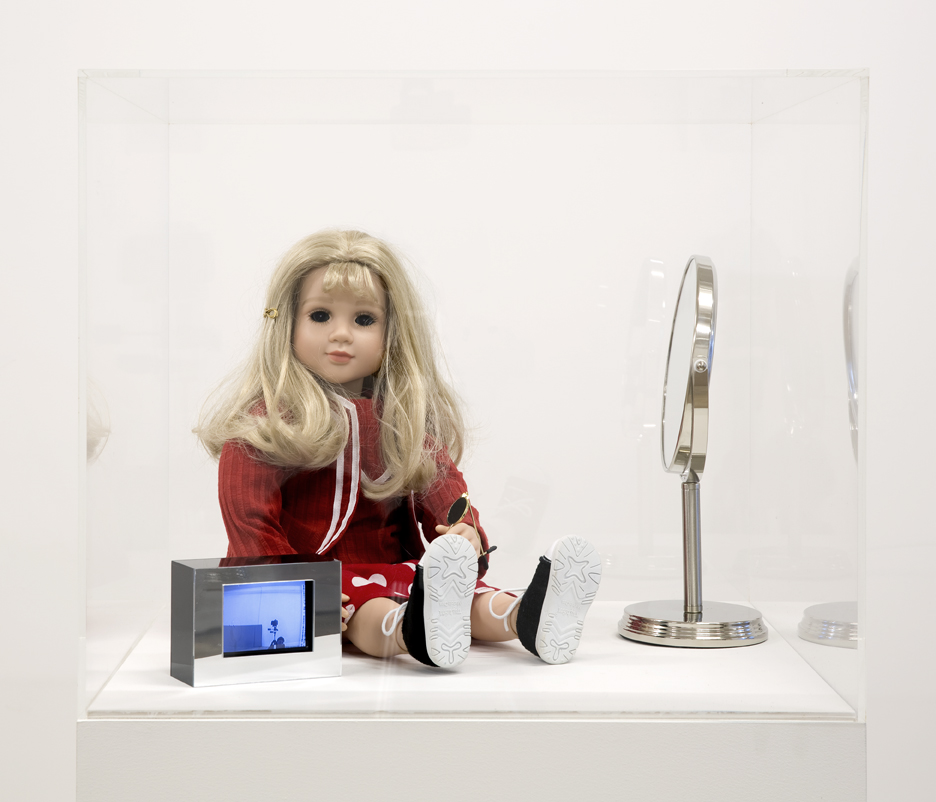
Lynn Hershman Leeson, CybeRoberta (1996). Copyright Lynn Hershman Leeson. Photos by Marc Brems Tatti. Courtesy Bridget Donahue, New York.
Lynn Hershman Leeson, "Origins of the Species" will be on view at Bridget Donahue through April 5, 2015.

